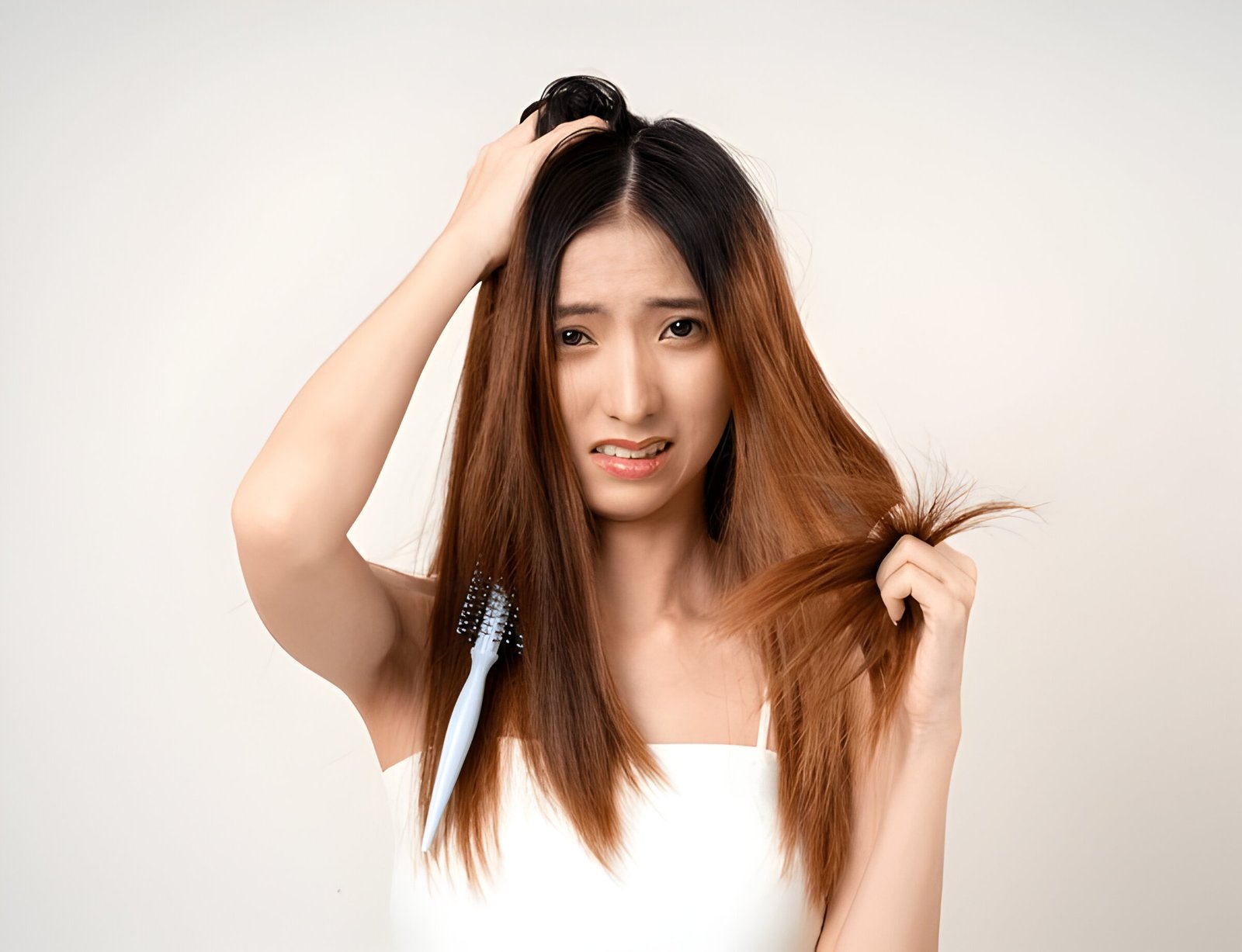Image Credit: Shutterstock
Dealing with itchy pubic hair when it’s growing back can be a frustrating experience for many women. This common issue often arises after hair removal methods like shaving or waxing, causing discomfort and irritation in a sensitive area. Understanding how to stop pubic hair itching when growing back for females is crucial for maintaining comfort and hygiene in everyday life.
To address this problem, women can explore various soothing remedies and prevention techniques. From using hydrocortisone cream to alleviate itching to adopting proper trimming methods, there are several approaches to manage this issue effectively. This article will delve into the causes of itchy pubic hair, offer practical solutions for relief, and provide tips to prevent future irritation. It will also discuss when it’s necessary to seek medical advice, ensuring readers have a comprehensive understanding of managing pubic hair regrowth comfortably.
Common Causes of Pubic Hair Itching
Regrowth after shaving
When females shave their pubic hair, they often experience itching as the hair grows back. This occurs because shaving only cuts the hair at the surface, leaving the follicle intact. As the hair regrows, it can cause irritation and itching. To minimize this discomfort, women can follow these steps:
- Trim long hairs with scissors before shaving.
- Soak the area in warm water to soften the hair.
- Apply a generous amount of unscented shaving cream or gel.
- Use a new, sharp razor to shave in the direction of hair growth.
- Rinse the razor frequently to prevent clogging.
- Pat the skin dry gently after shaving.
Ingrown hairs
Ingrown hairs are a common cause of pubic itching. They occur when hair grows back into the skin instead of emerging from the surface. To address this issue, women can take these steps:
- Gently exfoliate the skin to remove dead cells and release trapped hairs.
- Use warm water and circular motions with a washcloth or exfoliating brush.
- Carefully remove visible ingrown hairs using a sterile needle or tweezers.
- Apply rubbing alcohol to prevent infection.
Razor burn
Razor burn is characterized by red, itchy bumps that appear after shaving. It results from improper shaving techniques or using dull razors. To prevent razor burn, females should:
- Use a sharp, clean razor.
- Apply a lubricant like shaving cream or soap.
- Shave in the direction of hair growth.
- Avoid shaving too quickly or too often.
- Moisturize the skin after shaving.
Dry skin
Dry skin in the pubic area can lead to itching and irritation. To combat this, women can:
- Use gentle, fragrance-free soaps.
- Avoid harsh chemicals on the skin.
- Apply a fragrance-free moisturizer after bathing.
- Wear breathable, cotton underwear to reduce moisture and friction.
By following these steps, females can reduce pubic hair itching and maintain better comfort in this sensitive area.
Soothing Remedies for Itchy Pubic Hair
Cold compress
A cold compress is an effective home remedy to stop pubic hair itching. To apply this method, women can follow these steps:
- Take a clean washcloth and soak it in cold water.
- Remove excess water from the cloth.
- Apply the compress to the affected area.
- Reapply as needed to soothe the itching sensation.
Moisturizing oils
Natural oils can rehydrate sensitive areas and reduce itchiness and burning. Women can use the following steps to apply moisturizing oils:
- Choose natural oils like coconut oil or almond oil.
- Apply a small amount to the affected area.
- Gently massage the oil into the skin.
- Repeat daily to maintain skin hydration.
Hydrocortisone cream
Hydrocortisone cream can be effective for treating vulvar itching when used under medical supervision. Women should follow these steps:
- Consult a doctor before using hydrocortisone cream.
- Apply the cream only to external areas as directed.
- Use for the shortest time possible to prevent side effects.
- Avoid applying to broken skin or mucous membranes.
Oatmeal baths
Oatmeal baths can soothe irritated skin and relieve itching. To prepare an oatmeal bath, women can follow these steps:
- Grind uncooked oats into a fine powder.
- Add 1 cup of oatmeal powder to lukewarm bathwater.
- Soak in the bath for 10-15 minutes.
- Gently pat the skin dry after bathing.
- Apply a fragrance-free moisturizer immediately after.
By using these soothing remedies, women can effectively manage pubic hair itching and promote skin comfort in the affected area.
ALSO READ:How to tell your crush you like them
Prevention Tips for Smooth Regrowth
Proper shaving technique
To prevent itching and irritation, females should follow these steps:
- Trim long hairs with scissors before shaving.
- Soak the pubic area in warm water for 5-10 minutes to soften hair and open pores.
- Apply a generous layer of shaving gel or cream.
- Use a sharp, clean razor and shave in the direction of hair growth.
- Use short, light strokes to minimize skin tugging.
- Rinse the razor frequently to prevent clogging.
Exfoliation
Exfoliating is crucial for smooth regrowth. Women can:
- Use a gentle sugar-based scrub 2-3 times a week.
- Apply the scrub before shaving to soften skin and hair.
- Gently massage in circular motions to remove dead skin cells.
- Rinse thoroughly with warm water.
Hair removal alternatives
Alternative methods can reduce irritation:
- Waxing: Removes hair from the root, resulting in longer-lasting smoothness.
- Hair removal creams: Dissolve hair just below the skin surface.
- Laser hair removal: Offers a more permanent solution by damaging hair follicles.
- Epilators: Pluck hairs from the root using rotating micro-tweezers.
Aftercare routine
To soothe skin and prevent itching:
- Pat the skin dry gently after hair removal.
- Apply a fragrance-free moisturizer or treatment oil to hydrate the skin.
- Use an anti-chafing stick to protect against friction.
- Wear loose, breathable cotton underwear to reduce irritation.
- Avoid tight clothing that can cause friction in the pubic area.
When to See a Doctor
Signs of infection
While managing pubic hair itching at home is often effective, there are instances when professional medical attention becomes necessary. Women should be aware of the following steps to identify signs of infection:
- Check for increased redness in the affected area.
- Look for unusual swelling or pain.
- Monitor for the presence of pus-like discharge.
- Take note if experiencing fever along with these symptoms.
If any of these signs are present, it’s crucial to seek medical help promptly.
Persistent itching
When home remedies fail to provide relief, persistent itching may indicate a more serious underlying condition. Women should consider the following steps:
- Track the duration of itching symptoms.
- Note if itching persists for more than a few days.
- Observe if the condition worsens despite home treatment.
- Schedule an appointment with a healthcare provider if symptoms continue.
Unusual symptoms
Certain symptoms may require immediate medical attention. Women should be vigilant and take the following steps:
- Monitor for any unusual changes in the pubic area.
- Be aware of symptoms like fever and body aches.
- Consider the possibility of conditions like scabies that require prescription treatment.
- Use online tools like the Healthline FindCare to locate a dermatologist if needed.
While awaiting treatment, women can manage itching by:
- Keeping the genital area clean and dry.
- Applying a cool, moist cloth to soothe itching.
- Avoiding tight-fitting clothing and opting for breathable underwear.
- Steering clear of fragrances, harsh soaps, deodorants, and body sprays in the affected area.
Conclusion
Managing pubic hair itching when it grows back is a common concern for many women. By understanding the causes and implementing effective prevention techniques, females can significantly reduce discomfort and maintain better hygiene. From proper shaving methods to exploring alternative hair removal options, there are several steps to ensure smoother regrowth and minimize irritation. Soothing remedies like cold compresses and moisturizing oils offer quick relief, while regular exfoliation helps prevent ingrown hairs.
Ultimately, a combination of careful grooming practices and attentive aftercare has a positive impact on pubic hair regrowth comfort. It’s crucial to pay attention to any unusual symptoms and seek medical advice if itching persists or signs of infection appear. By following these guidelines and being mindful of their body’s needs, women can effectively manage pubic hair regrowth and maintain comfort in this sensitive area. Remember, everyone’s skin is different, so it might take some trial and error to find the best approach for individual needs.
FAQs
1. What can be done to alleviate itching from pubic hair regrowth?
To reduce itching from pubic hair growing back, consider these home remedies: wear clean underwear to avoid moisture and bacteria build-up, refrain from scratching, steer clear of irritants, practice proper shaving techniques, keep the area dry, apply hydrocortisone cream if needed, use over-the-counter lice treatments if applicable, and take antihistamines to manage severe itching.
2. How can females prevent itching in the pubic region?
Maintaining cleanliness and dryness in the genital area is crucial. Use mild soap for washing and rinse thoroughly. Opt for loose, natural-fiber underwear and clothing, and ensure you dry off completely after bathing or swimming. Additionally, avoid unprotected sexual activities to reduce the risk of infections that might cause itching.
3. What are the common reasons for persistent itching in the pubic area for females?
Persistent itching in the pubic area can be due to various factors including razor burn, contact dermatitis, jock itch, pubic lice, scabies, yeast infections, psoriasis, eczema, and folliculitis. If the itching is severe, painful, persistent, or worsening, it is advisable to consult a healthcare provider.
4. How should pubic hair be trimmed to minimize itching?
To minimize itching when trimming pubic hair, follow a careful grooming routine: clean your grooming tools before use, trim excess hair before shaving or shaping, bathe before grooming to soften the hair, exfoliate the skin to remove dead skin cells, use a good lather to protect the skin, and always shave or trim in the direction of hair growth. Take your time and be cautious to prevent irritation, razor burn, and injury.
ALSO READ:How to tell your crush you like them




